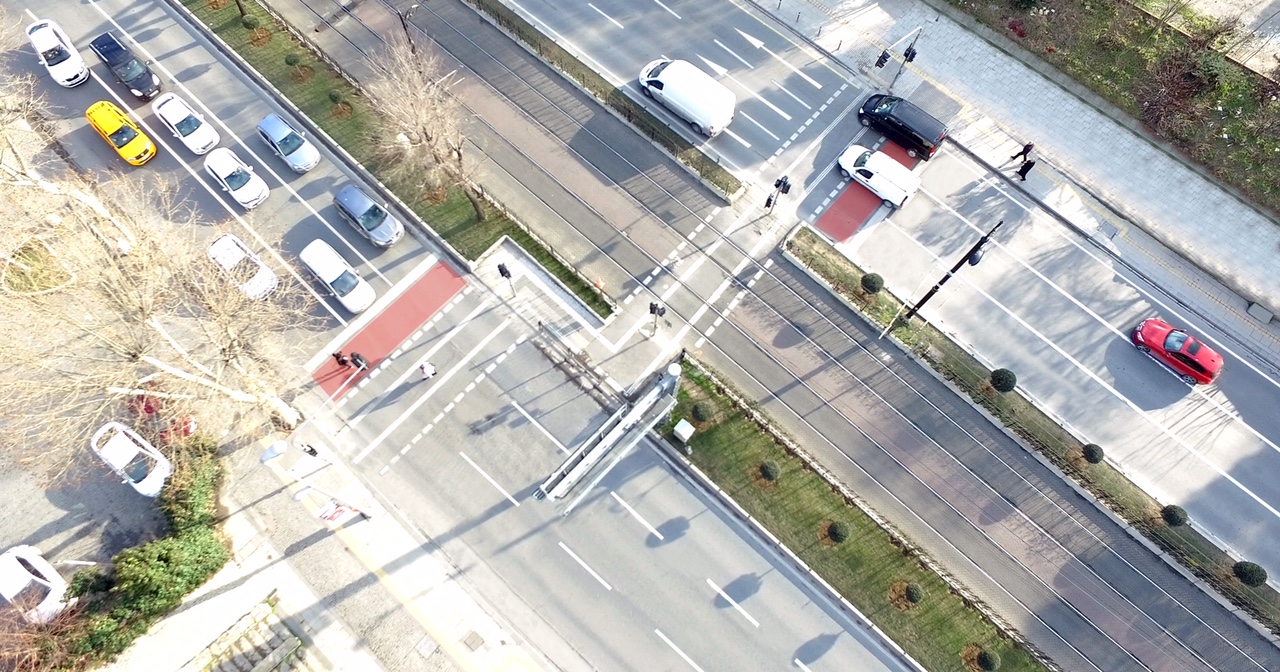17.03.2017
The Graded Pedestrian Crossing regulation which has been put into practise by the Istanbul Metropolitan Municipality decreases waiting period of the vehicles in signalized intersections and helps safe crossing over streets by pedestrians.
By means of this new implementation;
• It is possible to assign different traffic signal periods for different traffic directions.
• Traffic is stopped in one way where the pedestrian crosses the street which helps avoid unnecessary waiting times for vehicles.
• Pedestrians’ walking distance is also decreased.

Picture 1. Graded Pedestrian Crossing Application Example- 3731 Kartal Coast Pedestrian Crossroads
Graded Pedestrian Crossing helps pedestrians cross over safely and decreases the stop duration of vehicles by regulating irregular crossover of pedestrians.
Pedestrian crossover time changes depending on the length of the pedestrian corridor at signalized intersections. It should be long enough to pass safely for citizens such as old, disabled people and pregnants and children who walk slowly.

Picture 2. Graded Pedestrian Crossing Application Example - 4121 Fatih Pazartekke Pedestrian Crossroad
Pedestrian crossover corridor part which has different direction is operated independent of from each other and waiting area is constituted at central refuge. In this management of operating; after the pedestrians press the buton, they should press the button again at waiting area in central refuge to complete the crossing. In practice, pedestrian crossover where are on the road work independent from each other. Graded Pedestrian Crossing calculates to complete crossing time between first crossing part and waiting time at central refuge where pedestrian density is high such as school so, that pedestrians don't have to press the button again because Graded Pedestrian Crossing works automatically for second part.
Waiting area is built at central refuge for pedestrians to wait to cross the street safely. In this system, pedestrians should press the button again at waiting area in central refuge to complete their crossing because both traffic directions are operated independently from each other. Signal periods are calculated automatically to allow pedestrians complete their crossings and takes waiting time at central refuge into consideration where pedestrian density is high such as at school areas. Pedestrians don't have to press the button again because Graded Pedestrian Crossing system works automatically for the second part.
The waiting areas at central refuges are built in a way that pedestrians can easily notice that they will cross the street gradually. Moreover, they are also constructed to maximize the safety of the pedestrians with barriers which guide them and increase the visibility. Pedestrian barriers satisfy the need to hold for the old and disabled citizens and also for children. Pedestrian corridors have 200 centimeters separations between the poles and 140 centimeters height to satisfy the needs of disabled people and citizens.
The spaces and the angle between the designed pedestrian barriers' bars are increased to provide visibility.
The minimum length of waiting areas is 8 meters and the width is 2 meters. The pedestrian waiting area has been completely reduced to the road level and a special road surface is created so that visually-impaired citizens can easily walk with their walking sticks while following the corridor.